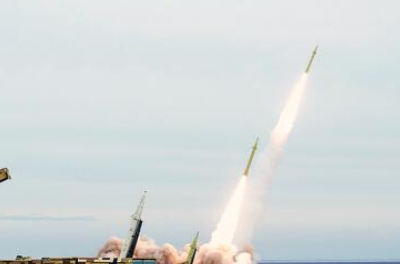Recent reports have sparked alarm over the possibility of Iran supplying ballistic missiles to Russia, an act that would mark a significant escalation in the already tense relations between the West and these two nations. Unconfirmed claims from several Western news outlets suggest that such transfers either have taken place or are imminent, a development that has raised concerns across the globe, particularly in the U.S.
The transfer of Iranian ballistic missiles is part of the strategic partnership between Iran and Russia. Iran seeks financial injections from Russia into its economy, aviation, and assistance in modernizing its cyber capabilities and missile-space programs, – ISW pic.twitter.com/N1pFJZ21dM
— UATV English (@UATV_en) September 7, 2024
The Wall Street Journal recently reported that U.S. and European officials believe Iran has already sent missiles to Russia, marking a first in the military alliance between the two nations. Other news outlets like Bloomberg and Reuters have echoed similar sentiments, citing intelligence that suggests a transfer is imminent. These missiles, identified as Fath-360 and Ababil, are close-range ballistic missiles, which, while limited in range, could relieve pressure on Russia’s own missile reserves, allowing for more strategic, long-range attacks on Ukraine.
The U.S. National Security Council, when pressed for confirmation, did not verify the reports but expressed deep concern. NSC spokesperson Sean Savett indicated that any missile transfer from Iran to Russia would be seen as a serious escalation, further entrenching Iran in Russia’s war efforts against Ukraine. The implications of such a development would likely prompt significant consequences from the U.S. and its NATO allies.
Iran, however, has denied these reports. In a statement to the U.N., Iran maintained its stance of abstaining from providing military assistance to any parties involved in the Ukraine conflict. Iran called for an end to weapon supplies to both sides of the war, aligning itself with a more neutral position in its public statements, despite its strategic alliance with Russia.
Military experts have suggested that Western powers could track the transfer of Iranian missiles to Russia using various methods, such as monitoring shipping routes, flight paths over the Caspian Sea, and satellite imagery. Open-source information, along with intelligence from confidential sources, could provide key insights into the transfer, though efforts to conceal these operations remain high.
Detecting a missile transfer may only become evident after the fact, when remnants of missiles fired in Ukraine are analyzed and traced back to Iran. This “smoking gun” evidence could further strain Iran’s diplomatic relations with the West and lead to stricter sanctions or other countermeasures.
The question of how to respond if such a transfer is confirmed remains challenging. Direct interdiction of these transfers could trigger an all-out conflict involving Russia and Iran, a scenario the U.S. seeks to avoid. Instead, experts recommend ramping up sanctions on Iran’s missile program and tightening restrictions on the export of components used in missile production. Yet, Iran has proven adept at evading sanctions in the past, complicating any efforts to curb its military capabilities.
US Goes Ballistic Over New Iranian Missile Transfers To Russian Forces | ZeroHedge so Biden the BIGGEST weapon supplier to Ukraine wants IRAN to stop supplying weapons to Russia? BOTH SHOULD STOP starting w warmonger Biden and Harris https://t.co/2ucST5KjJK
— Bob Lazar 💀 (@bobbybaeza25019) September 7, 2024
Other potential responses include sabotage within Iran’s missile program or declassifying intelligence on the transfers to deter further action. Providing Ukraine with enhanced air defense systems and the capability for long-range strikes is another strategy that could help mitigate the impact of a missile transfer, should it occur.
As tensions mount, the Biden administration has announced a new military aid package for Ukraine, which includes air defense missiles, aimed at bolstering Ukraine’s defense against the evolving Russian threat. However, U.S. officials have remained cautious about allowing Ukraine to use American weapons for attacks deep into Russian territory, for fear of provoking an even more dangerous escalation, potentially involving Russia’s nuclear arsenal.
Key Points:
i. The White House is alarmed by reports of an Iranian missile transfer to Russia, though no confirmation has been made.
ii. Iran denies involvement, stating it abstains from arming parties involved in the Ukraine conflict.
iii. Military experts suggest potential methods of tracking missile transfers but emphasize the difficulty in intercepting them.
iv. Western powers face limited options for responding, with sanctions, sabotage, and deterrence being key strategies.
v. The Biden administration continues to support Ukraine with military aid, while cautioning against escalating the conflict further into Russian territory.
Conner T – Reprinted with permission of Whatfinger News



